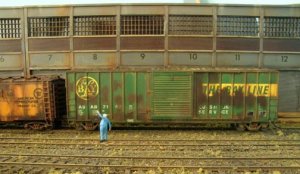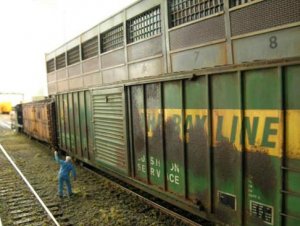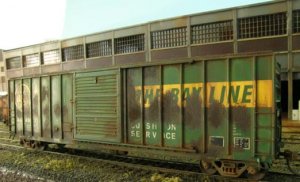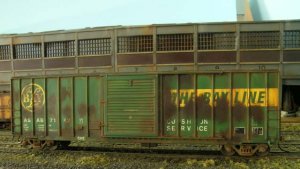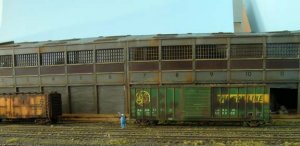Thanks for the compliments on my boxcar. The technique I use is actually pretty simple-it just takes a bit of trial and error. One thing I would recommend is to go to a railroad picture site on the internet and look for a nice, weathered looking car that you would like to emulate. Of course, if you want to do a boxcar-look for a nice, rusty boxcar. If you prefer a tanker-well, you get the idea. I find that by using a picture for reference, you take a lot of the guesswork out of where to "put" the rust and grime. Also, take notice of the various hues as real rust rarely, if ever, looks like what you get out of the Polly Scale "rust"color. In fact, I don't care for Polly Scale's rust in the first place. Also, remember that most rust is a dark, oily looking brown-as opposed to orange. The only time a bright orange is appropriate is on fresh surface rust. I do however use orange hues all the time-just not a garish orangey color that does not replicate real life. This is where the reference photos come in handy-and if anyone questions your rust patterns authenticness you can just refer them to the photo. I was a professional railroader for several years and I can tell you first hand - there ARE rustbuckets still riding the rails to this day. If there is enough interest on this forum, I may consider doing a tutorial if it would be recieved well. I did not invent this method, and there are others who do a far better job, but I am beginning to get the correct look and texture I am striving for. My technique involves the usual acrylic washes, combined with artists oils and chalk. Artists oils are an invaluable tool to have in your paint box- the new ones you can get are even water soluble and clean up with water {no caustic solvents needed}. I use these on top of the acrylics on rolling stock and structures. To me , they impart a feeling of mass and weight. If anyone has anymore questions, feel free to ask as I feel ANYBODY can do this-just practice on an old, cheapie car you have laying around. Good luck.
Stuart


